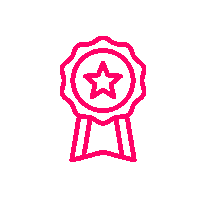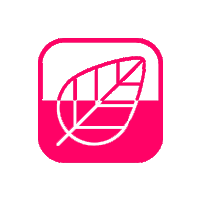Isfahan (Esfahan) the center of a province with the same name, the third-largest city of Iran after Tehran and Mashhad with a population of 2 million residents. Isfahan is located 406 kilometers south of Tehran, in the central Iranian Plateau, on the plains stretching along Zayandeh Rood River, in a relatively mountainous area in the center of the Iranian Plateau, which stretches from the snowy Zagros Mountains in the west of Iran to the east and north-central deserts of Iran. Isfahan is one of the most important economic hubs in Iran with large industries like Mobarakeh Steel Company, Iran Aircraft Manufacturing Industrial Company, and various traditional handicrafts.
History of Isfahan
According to the legends, the construction of Isfahan, which was named Jey, is assigned to Tahmures the third king of the Pishdadian Dynasty. During the Achaemenid Dynasty, Jey was an important spot and the center of the country as it was an intersection where the main roads met. During the Sassanid Era, when this region was the seat of princes and great royal families and military centers, the name of Jey was changed to Espahan (the seat of fire). The legacies left from the pre-Islamic era in Isfahan include the remains of Zoroastrian fire temples and the Shahrestan Bridge. Isfahan was sacked by the Muslim armies in 640, again by the Mongols in 1241, and then by Timur. Isfahan’s glory came during the Seljuk Dynasty and then again when it was reconstructed by the Safavid monarch Shah Abbas I who moved his capital here in 1591. The monuments from this period include palaces, grand mosques, caravanserais, and bridges, many of which are considered masterpieces of Islamic art. After the overthrow of the Safavid, the city fell into decadence as the Qajar moved the capital to Tehran.
The Geography and climate of Isfahan
Isfahan is located 1570 meters above sea level at the heart of the Iranian Plateau and is limited by the central desert from the east and north side and by the Zagros Mountain Range from the south and west. With an arid climate and a little rainfall, this city passes almost cold winters, with a temperature between -2°C to 8°C (27°F to 47°F), and the lowest temperature recorded is -19◦C. This city experiences snowfall once a year. The summers here get almost very hot with a temperature between 36◦C and 43◦C during July.
Top attractions that you should visit in Isfahan
Isfahan is one of the top touristic cities of Iran with many eye-catching cultural and architectural attractions, causing this city to be known as one of the most beautiful cities in the world. Here are the top attractions that shouldn't be missed while traveling to Isfahan.
Naqshe Jahan Square
Naqshe Jahan Square (Imam Square) is a UNESCO World Heritage Site that was built as a public square in the city of Isfahan during the Safavid Dynasty as a public square. Covering an area of more than 80,000 sq. m, with amazing design and ornaments this is the second-largest and scenic historical square in the world. This royal square is surrounded by the masterpieces of Safavid architecture, including Sheikh Lotfollah Mosque, Shah Mosque, Ali Qapu Palace.
Sheikh Lotfollah Mosque
This mosque was built in 1602 as a private chappel for Shah Abbas and his family, offering a unique experience of artistic devotion with its superb decorative elements, especially the wonderful design of the famous tilework under the dome of the mosque.
Shah Mosque(Imam Mosque)
Located on the south of Naqshe Jahan Square, Shah Mosque was built between 1611 and 1629 by the order of Shah Abbas. This mosque is one of the most spectacular mosques in Iran and is known for its elegant tile work and unique orientation.
Ali Qapu Palace
The royal Ali Qapu Palace is a part of the Naqshe Jahan Square which was built by Sheikh Bahaei as the residence of Shah Abbas and the place where he received guests and ambassadors from all around the world. This 6-story building is known for its wall paintings, its balcony, and stucco works of the sixth floor known as the Ali Qapu Music Hall.
Jame Mosque of Isfahan (Masjed-e Jame of Isfahan)
This UNESCO World Heritage site is the living testimony of the evolution of Iranian architecture and mosque architecture of the Islamic Era over twelve centuries. This 20.000 square meter area is the first sample of an Islamic mosque based on the four-courtyard layout of Sassanid palaces.
Chehel Sotun Palace
Chehel Sotun is a Persian garden inscribed as a UNESCO World Heritage Site. This includes a lush garden and a mansion ornamented with large and small wall paintings showing historical ceremonies and battles of the Safavid Period. Chehel Sotun was a palace where the Safavids entertained the foreign dignitaries.
Si-o Se Pol Bridge
Also known as the Allahverdi Khan Bridge, Si-o Se Pol Bridge is the most famous bridge of Isfahan built over the Zayandeh Rud (Zayandeh River). Si-o Se in Persian means 33 and refers to the number of brick-made arches.
Pol-e Khaju (Khaju Bridge)
Khaju Bridge is another historical construction built during the Safavid Dynasty. This stunning bridge has two floors and a pavilion which was used for holding meetings. TOday Khaju Bridge is a place where locals hang out and sing Iranian songs.
Hasht Behesht Palace
Hasht Behesht is another royal palace built during the Safavid Era as a residential and ceremonial building for Shah Abbas. This lovely mansion is a four facade building with artistic tile work, brickwork, and paintings.
Vank Cathedral
The Vank Cathedral is built in the New Julfa, the Armenian quarter of Isfahan during the 17th century. The interior is covered with fine paintings and gilded carvings and includes a wainscot of rich tile work.
Things to buy in Isfahan
Isfahan is called the city of Iranian handicraft and traditional arts. These works of art comprise a major portion of Iran's exports, particularly to Europe. The contemporary traditional arts and handicrafts of Isfahan are in fact a continuance of the Safavid Art pursued by the modern Iran craftsmen.
Carpet
Isfahan has long been noted for its fine Persian carpets and is known for the very delicate and complicated designs and very fine weaving techniques.
Miniature
Miniature is a small painting on paper, or pieces of camel bone which is done by masters of miniature art, based on Persian poems and tales. Persian miniature is inscribed as a UNESCO World Heritage.
Mina (enameled copper)
Minakari is one of the most glorious Iranian handicrafts. It is the art of painting and designing the surface of metals such as silver, gold and specially copper by glazing colors and fire in the furnace.
Ghalam Kar
Ghalamkar art consists of printing different traditional forms in different colors on textile.





